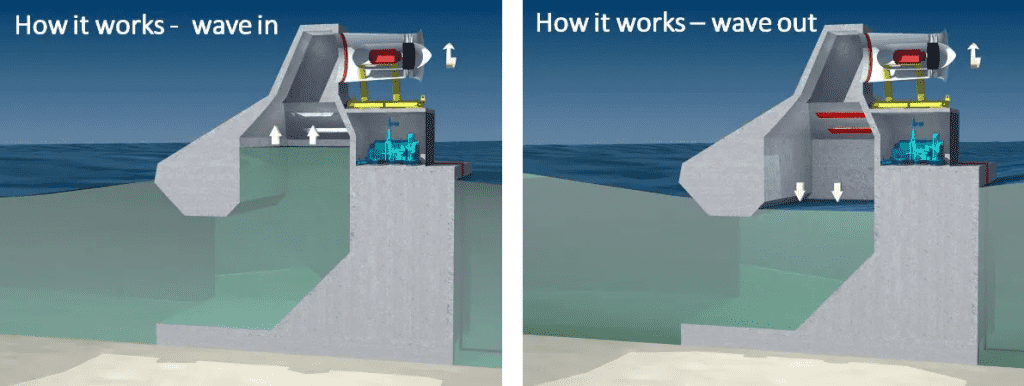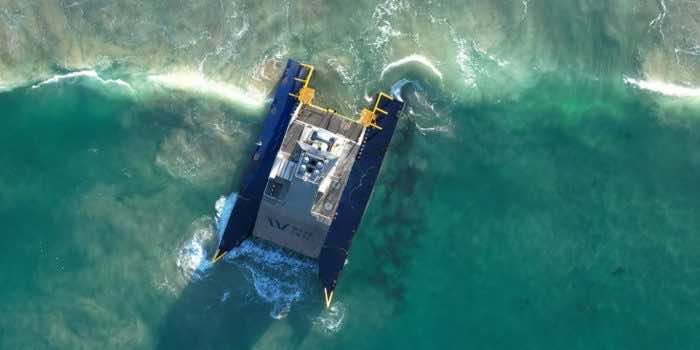The UniWave sea platform is an artificial blowhole that derives energy from ocean waves. It is now predicted to create some of the cheapest renewable energy on the market with high reliability and predictability.
Wave Swell Energy (WSE) and the UniWave are designed to emulate the shape of a natural blowhole – a rock formation that channels waves in at the bottom and features a hole further up the top.
The UniWave creates the same effect as a blowhole. It lets air and water push freely up a channel and through an outlet valve. Afterward, the valve closes as the wave moves back, creating a powerful vacuum in the chamber, and the air is sucked in through an inlet at the top of the device, where it runs through a turbine and generates electricity.
This energy system derives inspiration from the concept of an oscillating water column, where waves wash into a chamber and displace air, which spins a turbine to generate electricity.
The company built a 200-kilowatt prototype and carried out testing off Australia’s King Island. The results exceeded expectations.

Last time, WSE could not provide a Levelized Cost of Energy (LCoE), but the company has now presented the results of an independent analysis undertaken by Australia’s highly respected Commonwealth Scientific and Industrial Research Organisation (CSIRO).
The report says that by applying an industry-wide “learning rate, the WSE technology can achieve an LCoE of AU$0.05 (US$0.032)/kWh, which is equal to the current lowest cost generation of onshore wind and solar if it can reach a deployment of 2,500 MW of installed capacity.”
The report indicates that renewable projects without blowhole generators will need enough batteries to guarantee 80% of the average system power when the sun’s not shining and the wind’s not blowing. But with these UniWave devices on board, the batteries can be much smaller, and the overall system significantly cheaper.
Getting closer to that 0.8 mark, the difference becomes huge. A 70% dispatchable hybrid system that pairs a battery with equal capacities of offshore wind, solar, and blowhole generators would have an up-front CapEx three times cheaper than one without it.
The CSIRO estimates that wave energy as a sector can scale up to provide some 1.3% of global energy demand by 2050 or around 170 GW of installed capacity.


